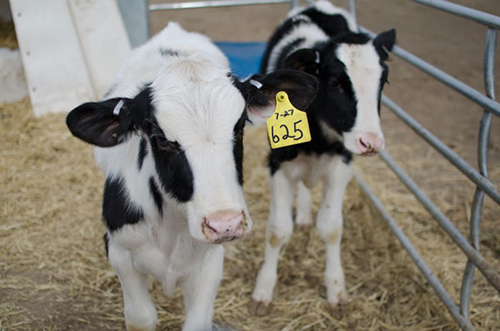
Weaning time is easily one of the more difficult management challenges for producers with calf and heifer feeding programs. For many, the transition from milk or milk replacer to a forage and concentrate diet spells a growth set back and potential for disease. The goal of the weaning process should be to adequately develop the rumen, meet nutrition requirements, and maintain growth and health.
In a recent Penn State Dairy Digest article, Xavier Suárez, a calf and heifer specialist, suggested the best formula for ensuring a smooth weaning period begins by focusing on the rumen environment and how we can meet the animals nutritional requirements.
Research in the 1950s found fermentation of starch stimulated more rumen development than fermentation from forages. Further research has shown high-starch starters provide a more concentrated energy source for the calf, as the calf tends to eat relatively large meals in proportion to its body and rumen size. The importance of these high-energy starters means producers must be mindful of their timing in introducing forages. Calves that are given access to forages too early are liable to suppress their grain consumption and fail to stimulate adequate rumen development. Forages tend to digest more slowly and fill the calf's digestive system, discouraging additional feed intake.
On the other hand, calves that remain solely on a concentrate diet too long are susceptible to ruminal acidosis. Calves eating pelleted starters are more likely to deal with this set back than animals that are fed a textured starter. In both cases, however, introducing forages at the correct time can boost starter consumption and help to buffer the developing rumen, preventing ruminal acidosis.
As a general recommendation, Suárez proposes introducing forages to calves when starter consumption reaches 5 to 6 pounds per day for calves consuming a textured starter. This occurs around 7 to 8 weeks of age. For calves consuming a pelleted starter, forages could help protect from ruminal acidosis at 5 to 6 weeks of age. When calves are weaned, their diets should include a good quality starter as well as forage. For producers feeding a good quality textured starter, Suárez suggests the forage component needs to make up 5 to 10 percent of the calf's diet until 16 weeks of age.
As with most things, Suárez warns producers that management and quality of feeds greatly affect the success of a weaning plan.

The author is the Special Publications editor. She is responsible for development and marketing of books and plans, as well as coordinating internal communication pieces. Maggie was raised on a 150-cow dairy near Valley Center, Kan. and graduated from Kansas State University with degrees in agricultural communications and animal sciences.